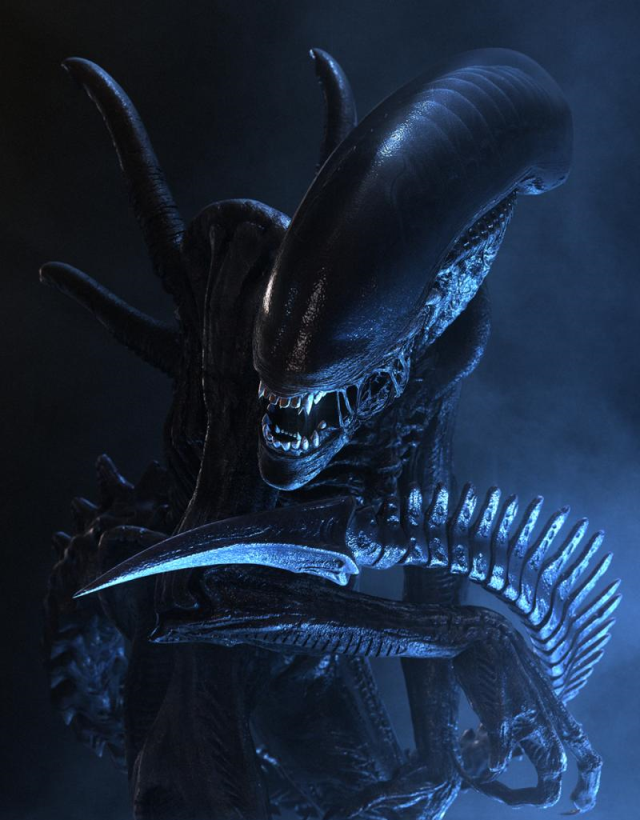
Think of every childhood monster you thought might be in your closet or under your bed or anywhere else a monster might hide during the day. What did your child-self know about the monster? Probably only that it was big, that it only came out at night and wanted to eat/kill you, and that maybe only the nightlight kept it away. Perhaps there were certain details, like fur or scales or whatever, but that was the extent of it. You didn’t know if the monster had any weaknesses, or where it came from, or why it chose your closet/bed/whatever. The monster just was, it wanted you, and you were only able to keep it away during the day. And it terrified you.
Now perhaps as a young child, you simply weren’t capable of thinking that any of that other stuff might exist for your monster. But if you confronted a creature like that as an adult, a monster where all you knew about it was its location, its active period, and its diet of humans, but nothing else, you’d be freaked. Because a monster is scary, but a monster that you don’t know how to fight is even scarier.
And that can be applied to nearly any antagonist in horror. The less is revealed about it, the scarier it is.
Case in point: vampires. When I first learned about vampires, my knowledge of what they were was limited to that they came out at night and didn’t like the sun, that they drank human blood (which could sometimes create other vampires), and that they could turn into bats. For a few years, that was all I knew about vampires, and they terrified me. If I ever came upon one, the only recourse I had was to try and survive till daylight, or I was dead! But when I found out that vampires were susceptible to stakes, garlic, crosses, and required invitations into private residences, they became a little less scary. Why? Because they were easier to deal with, and things that are easy to deal with are less terrifying than those that aren’t easy to deal with.
Contrast that with many of the works of the manga artist Junji Ito. I’ve had the opportunity to look at a bunch more of his work since reading his masterpiece Uzumaki (read my review of the manga here, as well as my review of the film adaptation here), and his works rarely tell us the hidden history or how to deal with the monsters featured within. He only gives us enough of a look to get the modus operandi of the monster, and then weaves the story around that. One of his works, Tomie, revolves around an immortal girl whose beauty often drives people to murder her/for her, and who keeps coming back to life no matter how much you kill her. We never get a full explanation of how she is able to do that. Is she some sort of genetic aberration? An undead creature brought back by a grudge? Ito doesn’t tell us, and forces the reader to wonder at the possibilities, as well as how much is being kept from us about these mysterious monsters.

Tomie, one of Junji Ito’s signature characters.
And that is terrifying. And Ito is well aware of that. He knows that the less you know about an antagonist, the more possibilities there are, and that makes the horror more effective. And not just Ito: HP Lovecraft, Stephen King, Adan Ranie, and other horror authors, including me, are well aware that adding a bit more mystery to our horror stories, and not letting the readers see beneath the proverbial hood of the monster, heightens the fear the reader will feel.
And this is the main reason why I was disappointed with Alien: Covenant this past weekend, as well as the catalyst for this post. Granted, that movie had a number of problems, but one thing that Covenant and its predecessor Prometheus both do is try to give an origin story to the films’ real stars, the Xenomorphs. When it comes to antagonists in horror getting origin stories, it’s on a case-by-case basis, and in the case of the Xenomorphs, I’ve actually come to dislike the idea of giving them an origin story. Part of their power is that, even for man-eating monsters, they’re so divorced from what humans perceive as normal. In fact, the name Xenomorph means “strange form,” and it’s that strangeness that makes them so terrifying and iconic.
So when Prometheus and Covenant try to explain them to us in origin stories, they put them in contexts that we can understand, robbing Xenomorphs of what makes them so amazing. Granted, it’s a question everyone who’s seen the original films has asked at some point: “Where do the Xenomorphs come from?” But it’s not a question that has to be answered. The fact that they had such a shady origin to them was part of their mystique, causing our minds to wander and wonder if maybe, somewhere in that until origin story, there’s a dark truth out there waiting to make us wet our pants. And now, that sense of wonder is gone, because these movies have given us an origin that, rather than being dark and terrifying, is at times confusing and at other times lame.
What I’m trying to get at is that sometimes–not all the time, but a significant portion of the time–you don’t need to reveal everything about your monster. Sometimes, keeping some mystery around adds more to the story, and keeps the source of our terror effective. And in a horror story, keeping things terrifying is one of the most important aspects of horror storytelling.








